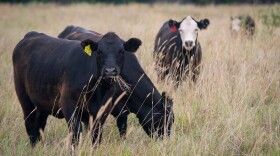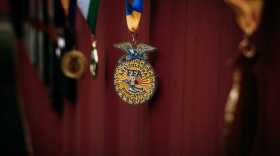On the 102nd anniversary of the Tulsa Race Massacre, a crowd collected soil in remembrance of the unknown victims killed in what many consider to be the worst act of racial violence in U.S. history.
The massacre began after rumors circulated that a 19-year-old Black man assaulted a 17-year-old white woman. A white mob razed Tulsa's Greenwood District, known as Black Wall Street, on May 31 and June 1 after a struggle outside the county jail where the young man was held.
While fewer than 40 were confirmed to have died in the massacre, some researchers estimate hundreds of men, women and children died.
On Wednesday, Tulsans gathered at Standpipe Hill in the Greenwood District to honor the unknown victims of the massacre. After poems, prayers and speeches, those in attendance poured soil into four jars in remembrance of the victims.
Two of the three remaining massacre survivors — Viola Fletcher and Lessie Benningfield Randle — were among those at the ceremony.
Speaker and local historian Kristi Williams pointed out that some residents were shot as they ran from their homes with their arms raised.
"Other Black residents were so afraid of exposing themselves to the firing mobs that they stayed in their homes, even as they burned, sometimes to the point of them being engulfed by flames," Williams said.
Kenneth Brant of the Terence Crutcher Foundation pointed out the juxtaposition of Hughes Van Ellis, the third living survivor, fighting for the U.S. in World War II even after what his country did to him back home.
Organizer Greg Robinson pointed out that the hill was where the wealthiest Black Tulsans lived — and where Black Tulsans fought white mob members during the massacre. Williams specifically named Horace "Peg Leg" Taylor, who held off white mob members with a Gatling gun at the top of the hill.
Robinson said the location of the ceremony symbolized what Black Wall Street “was, is, and will be into the future.”
"We ensure that it will never happen again, and we make a pledge to return this space to the greatness that it absolutely deserves," Robinson said.
“As we collect this soil, we remember those names, known and unknown. This great cloud of witnesses that stand with us today, and we honor their memory with our commitments to truth, to restoration — to reparations, to reparations, to reparations — and finally, to reconciliation," said Tiffany Crutcher, director of the Terence Crutcher Foundation.
This report was produced by the Oklahoma Public Media Exchange, a collaboration of public media organizations. Help support collaborative journalism by donating at the link at the top of this webpage.








